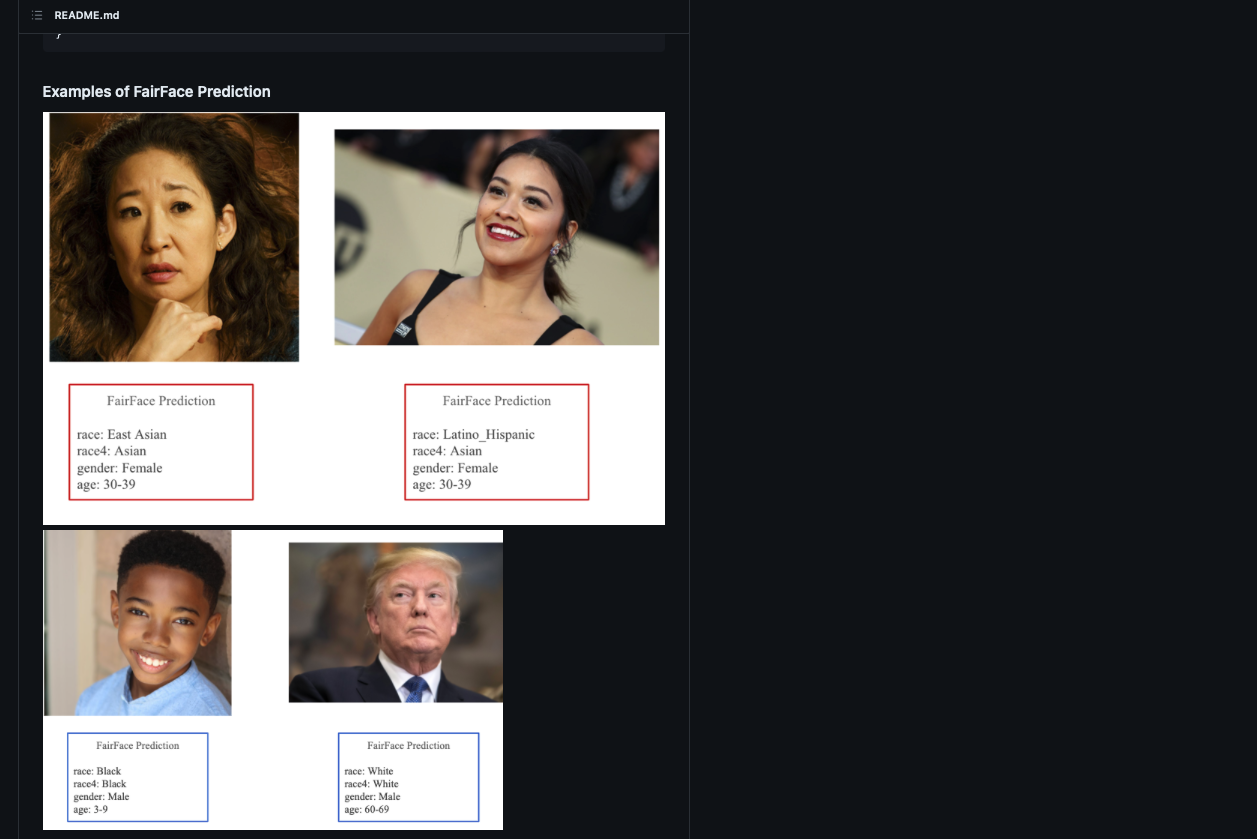Carina I. Hausladen, Manuel Knott, Colin F. Camerer, Pietro Perona
Social perception of faces in a vision-language model



"Make it More" Trend


Ok, make it more Swiss

MORE SWISS
Moooorrreeee Swisssss!!

Bloomberg, March 8th, 2024
Humans spontaneously make social judgments from the photographs of faces.
Here, we investigate whether vision-language models can also do so.
Understanding socially relevant behaviors of AI systems is necessary to use them responsibly.
We measure social perception
of human faces
in a vision-language model.

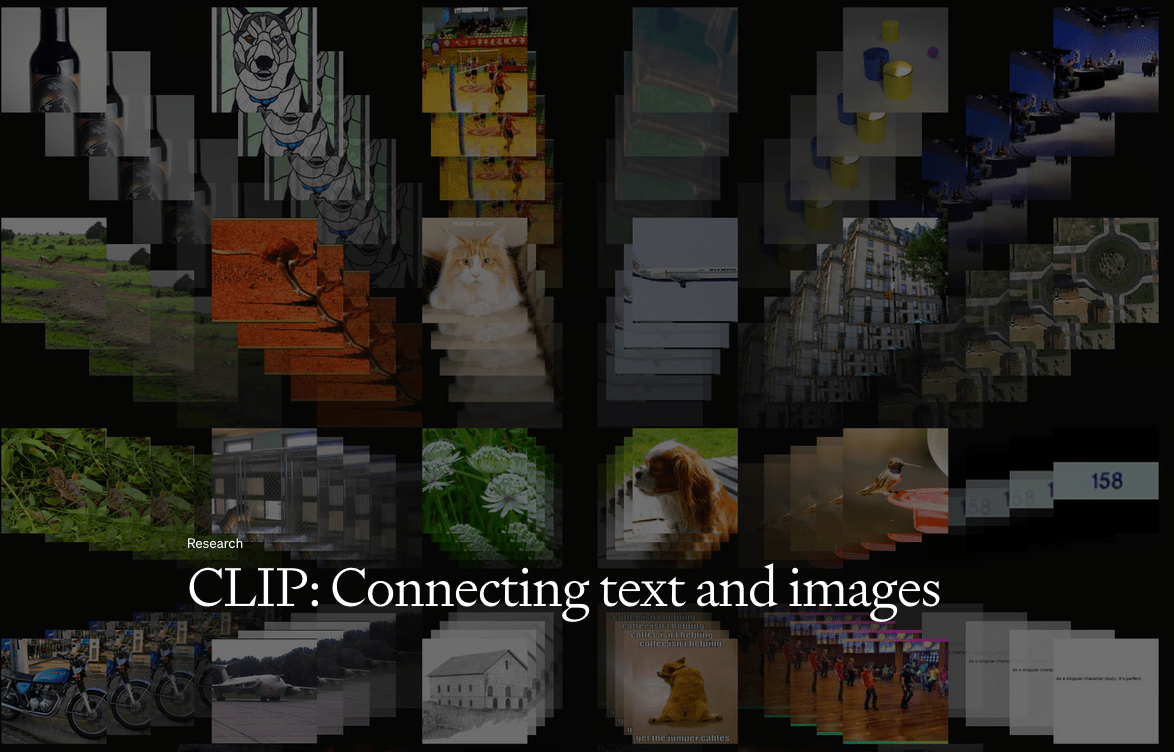
- CLIP is a state-of-the-art vision-language model that connects images and text.
- It is used for tasks like image recognition, captioning,
- and powering applications such as DALL·E.

A photo of a
person

A photo of a
person

A photo of a
person
Measuring Social Perception via
Cosine Similarity

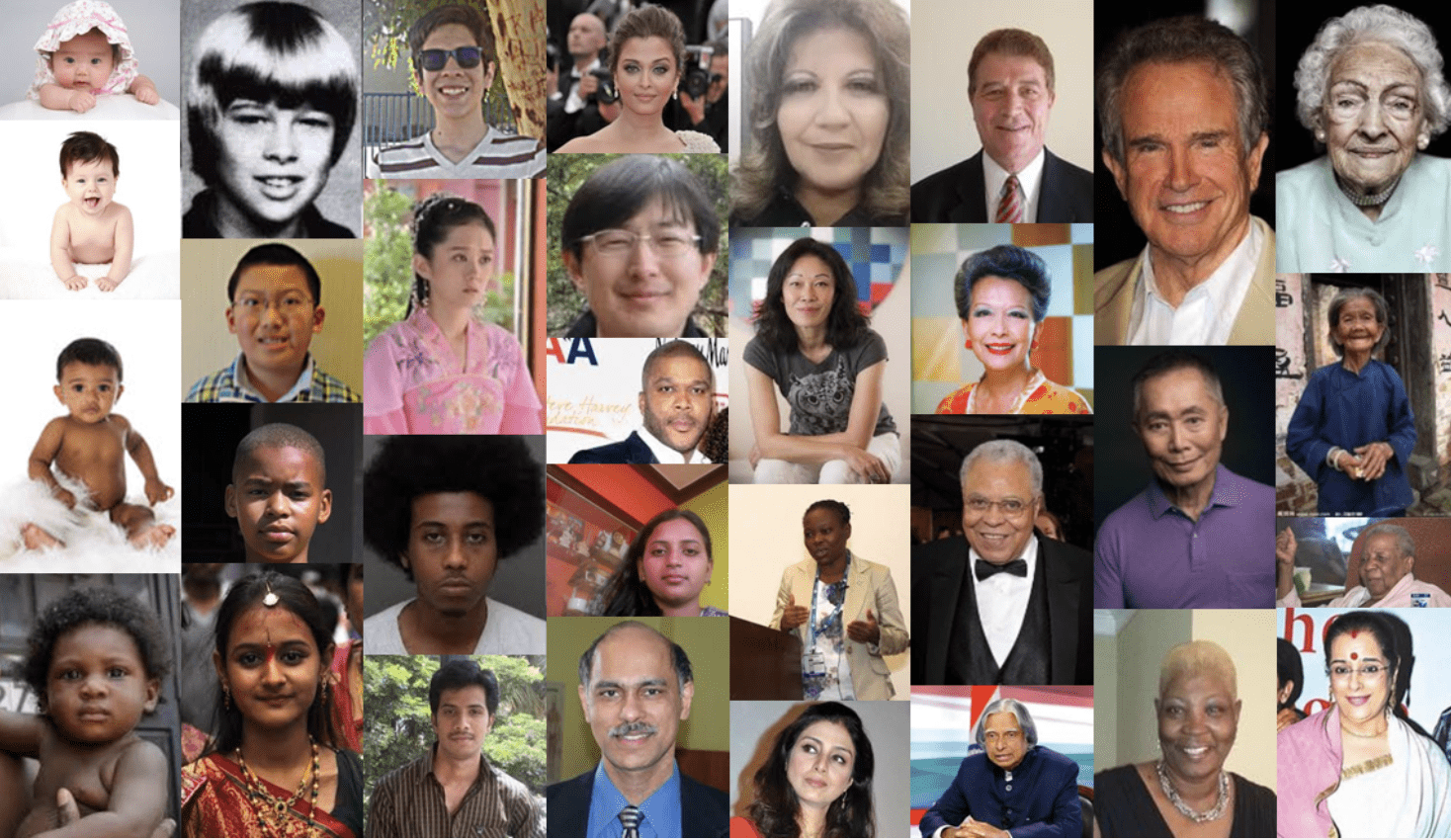
FairFace
Karkkainen et al. (2021)
UTKFace
Zhifei et al. (2017)

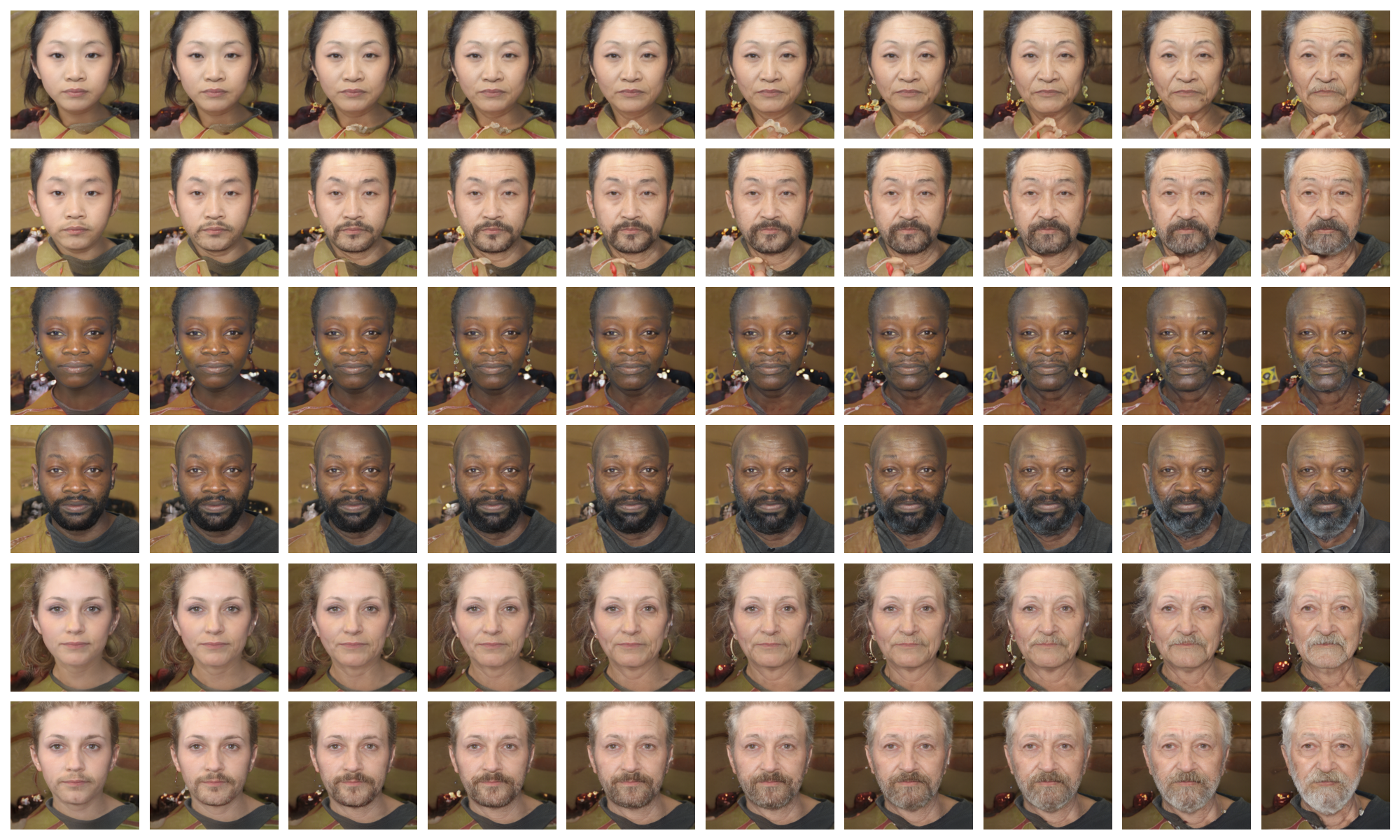

FairFace
Karkkainen et al. (2021)
UTKFace
Zhifei et al. (2017)
CausalFace
Liang et al. (2023)



age
CausalFace
CausalFace
female
male
age
CausalFace
female
male
age
Asian
Black
White
Legally Protected
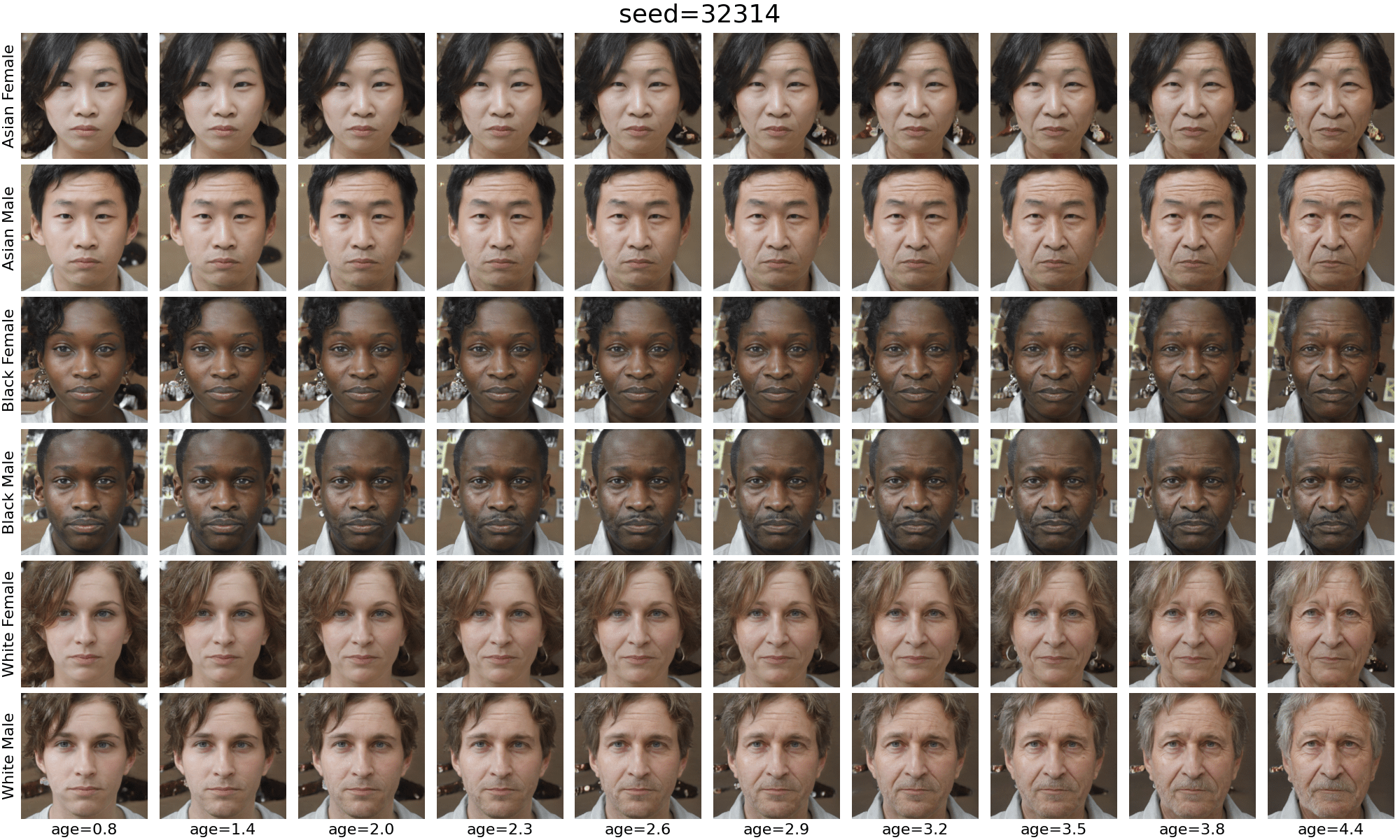
Legally Protected
Non-protected

smiling

lighting

pose
A photo of a
person

A photo of a
person
Stereotype Content Model
Fiske et al. (2007)
Agency Belief Communion Model
Koch et al. (2016)
Warmth
Competence
unfriendlyfriendlyAgency
Belief
Communion
+
–
C
P
–
+
surgeon
parent
A photo of a
person
Stereotype Content Model
Fiske et al. (2007)
Agency Belief Communion Model
Koch et al. (2016)
Warmth
Competence
Agency
Belief
Communion
+
–
C
P
–
+
parent
unfriendlyfriendlysurgeon
We deploy an experimental dataset.
1.
We deploy theories of social perception.
2.
We investigate the embedding space directly.
3.


FairFace
UTKFace
CausalFace
How does CausalFace compare to wild-collected datasets?
- Markedness (Wolfe and Caliskan, 2022)
- WEAT (Caliskan et al., 2017)
- Skew@k, NDKL (Geyik et al., 2019)
- Mean cosine similarities
Commonly used bias-metrics
Markedness
a photo of a person
a photo of a WHITE person
unmarked
marked
| image category |
CausalFace |
|---|---|
| white |
45.5 |
| black | 0.7 |
| asian | 0.1 |
| male | 0.4 |
| female | 0.6 |
| Fair Face |
UTK Face |
|---|---|
| 47.09 |
32.6 |
| 1.8 | 2.9 |
| 1.9 | 4.1 |
| 0.00 | 20.1 |
| 0.00 | 11.6 |
>
%
- Markedness (Wolfe and Caliskan, 2022)
- WEAT (Caliskan et al., 2017)
- Skew@k, NDKL (Geyik et al., 2019)
- Mean cosine similarities
✓
✓
✓
✓
Commonly used bias-metrics
Protected Attributes
female
male
age
Asian
Black
White
Non-protected Attributes



smiling
lighting
pose
How do
protected and
non-protected
attributes affect social perception?
smiling

Bootstrapping Differences
Bootstrapping Differences
smiling
—

Bootstrapping Differences
smiling
—

—
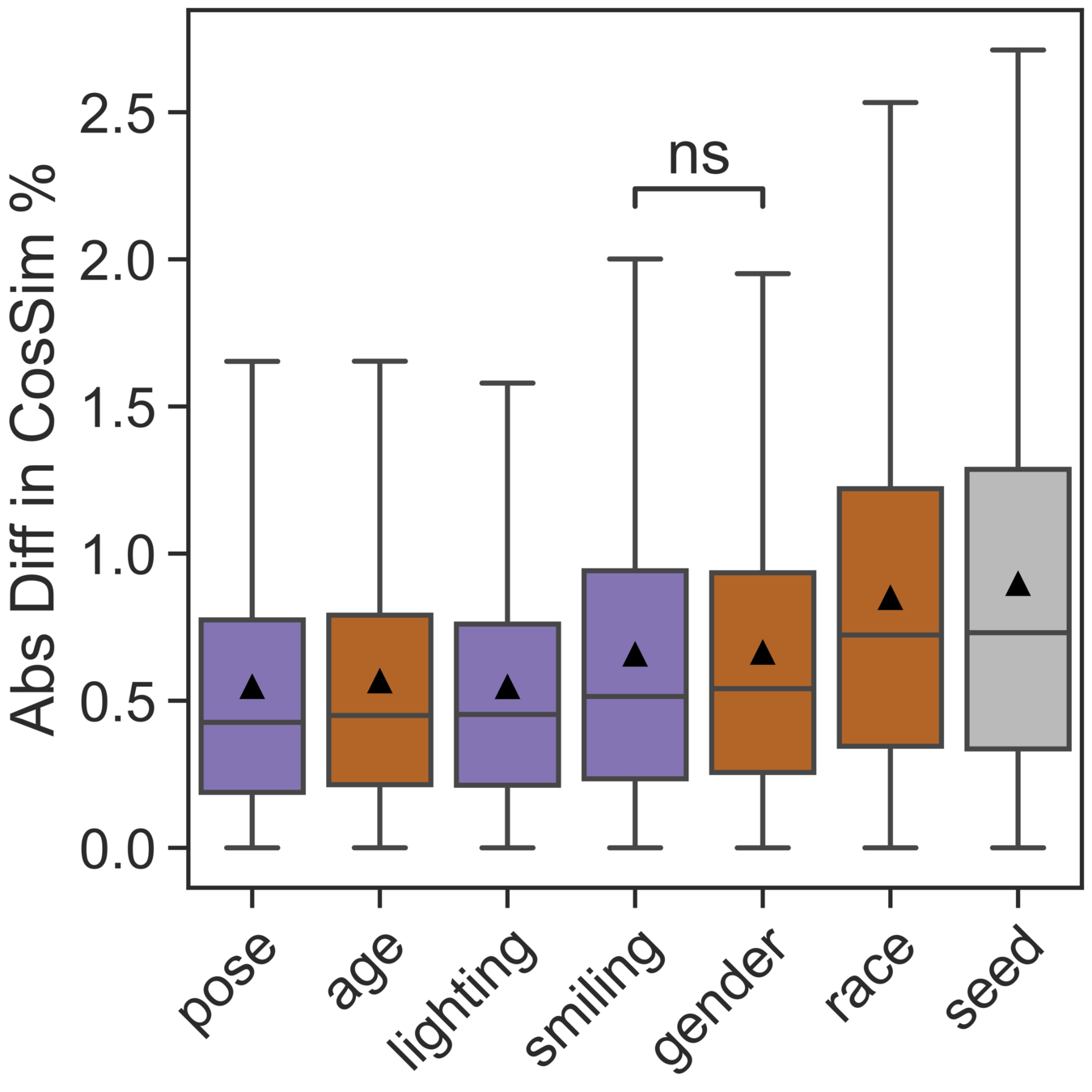
protected and non-protected attributes
—

—

—

—

How does
age-related
social perception compare across datasets?
Warmth
Competence
Belief
Communion
–
+
Agency
–
+
Agency


UTKFace
💼 Powerful
👑 High status
🦁 Dominating
💰 Wealthy
💪 Confident
🏆 Competitive
🍂 Powerless
📉 Low-status
🌾 Dominated
🪙 Poor
🐭 Meek
🍂 Passive
UTKFace
Agency
FairFace


Agency
CausalFace
UTKFace
FairFace



CausalFace
–
+



youngest
oldest
Agency
+
Positive Agency
Black Women
youngest
oldest


example
identity
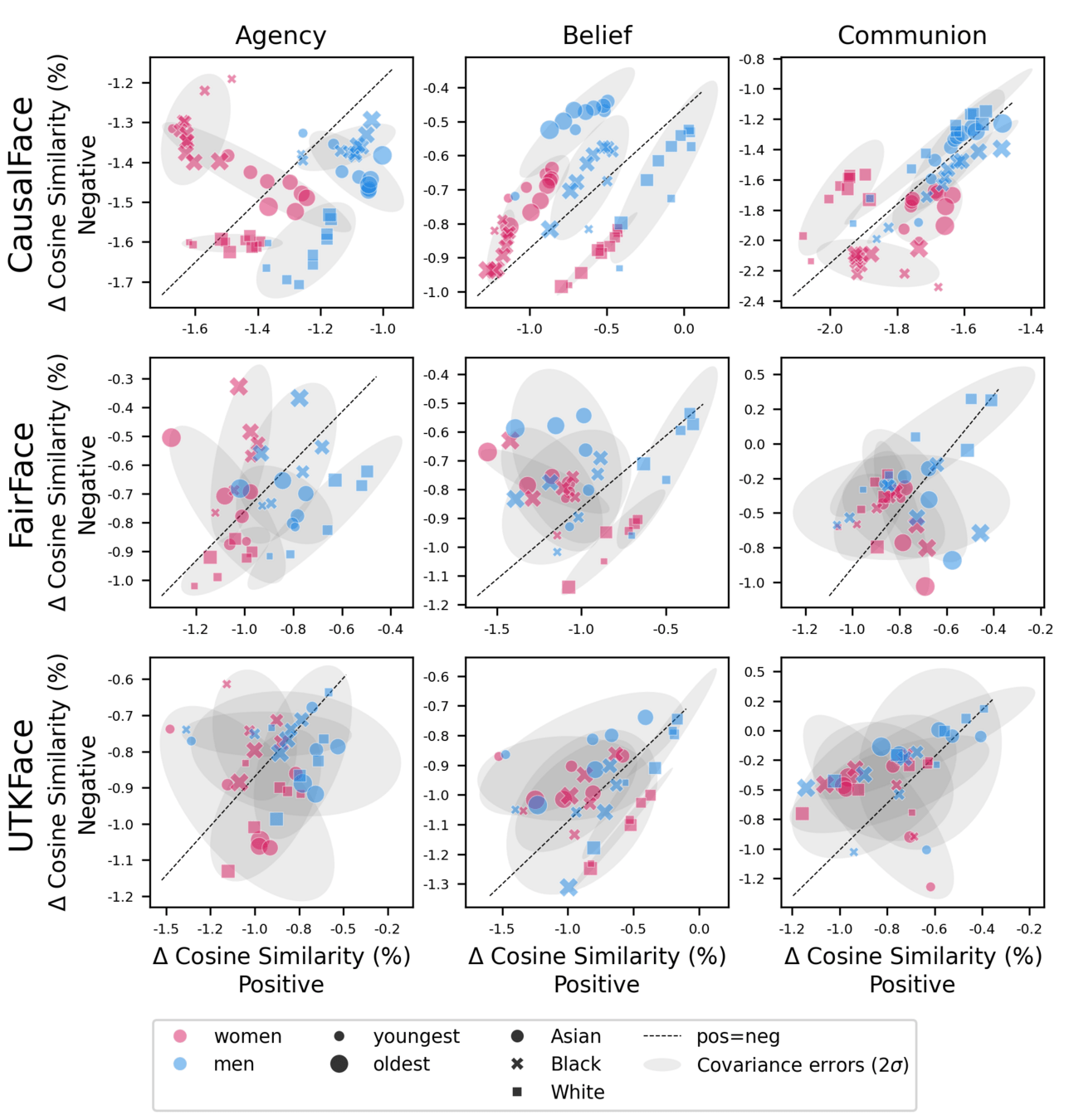







- The observation that Black women are a special category in the social perception of age is consistent with human subject research.
- 'Strong Black Woman ideal' is reinforced with age (Baker 2015).
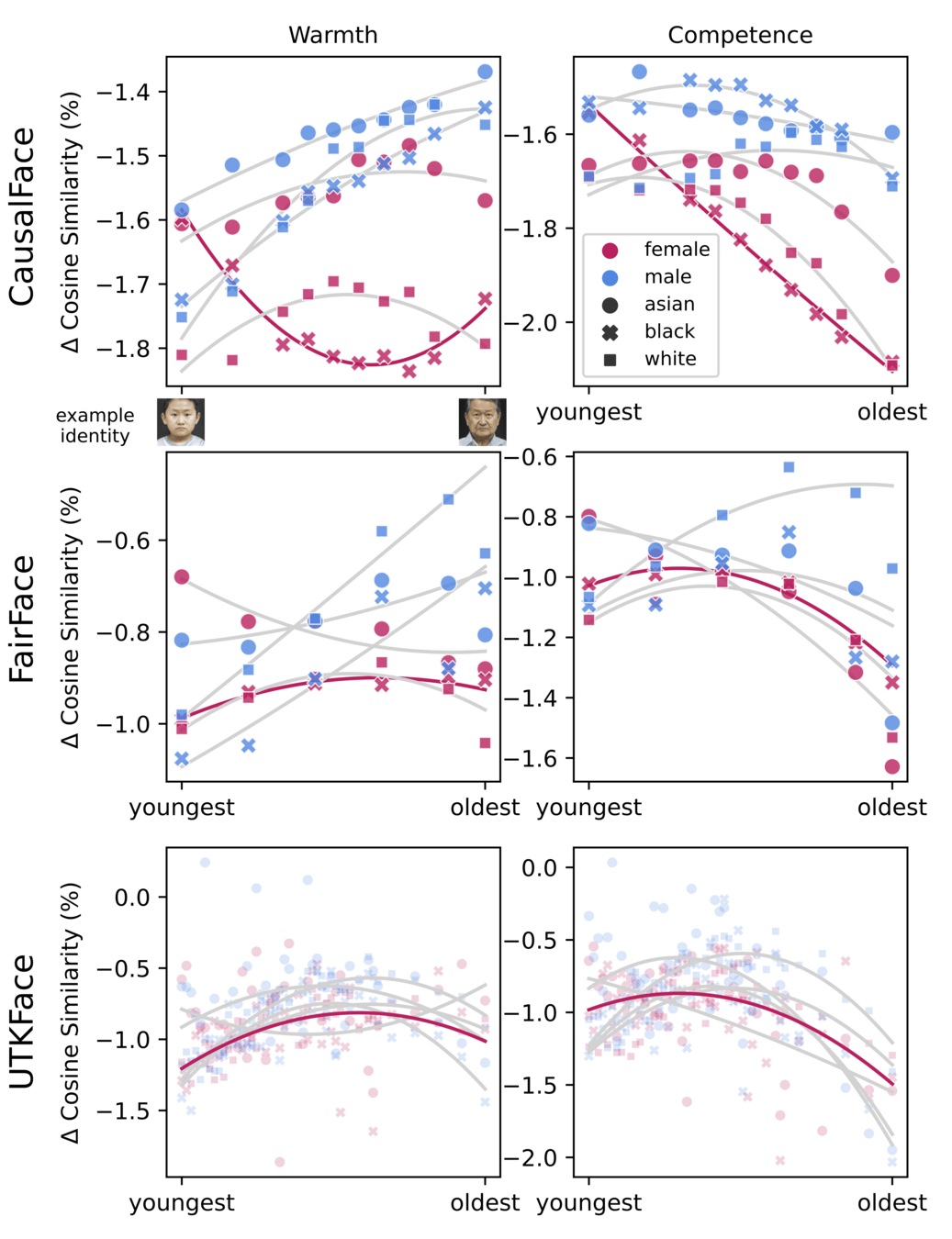








age
?

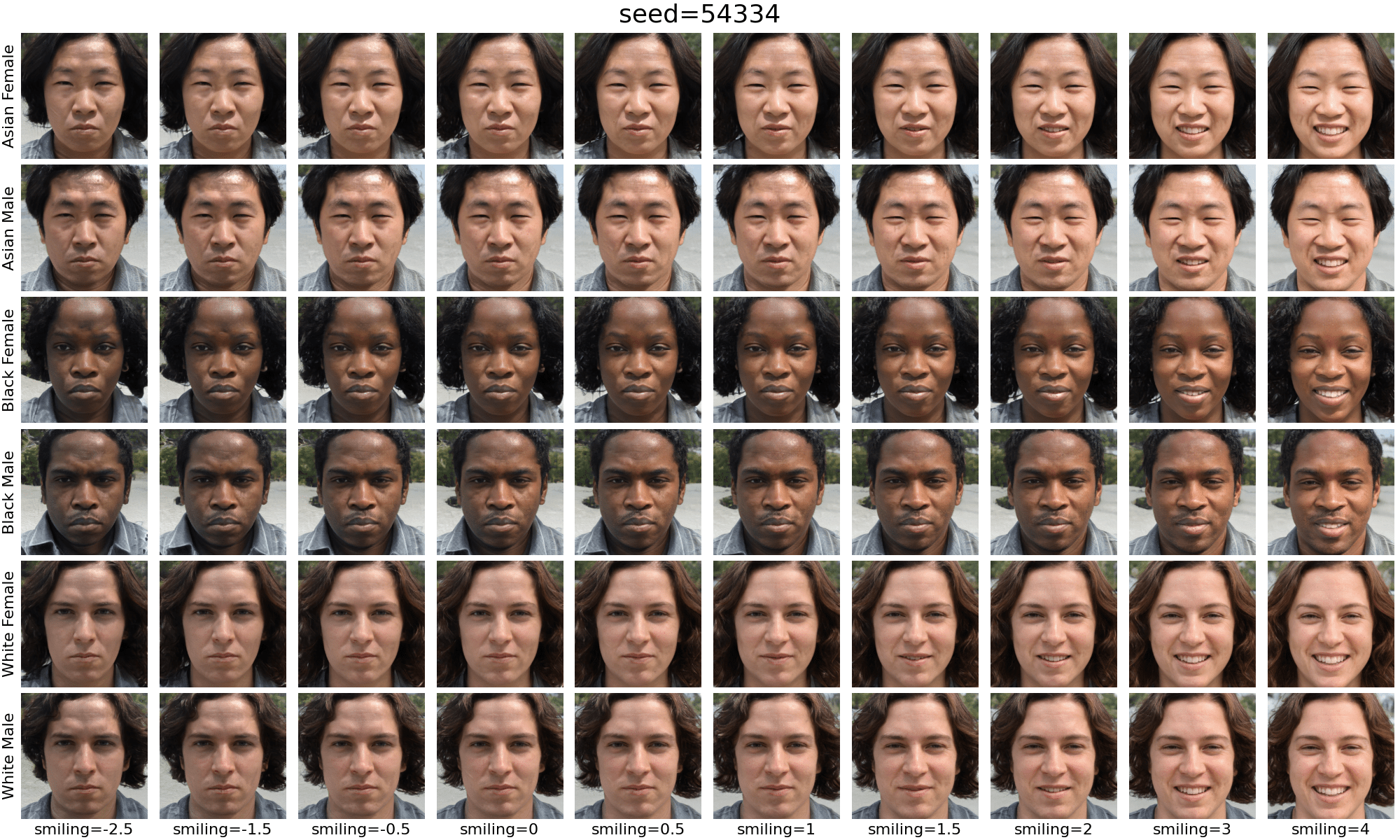
smiling
female
male
Asian
Black
White
smiling

Smiling


NegativeAgency
Conservative Belief
Negative Communion
Smiling
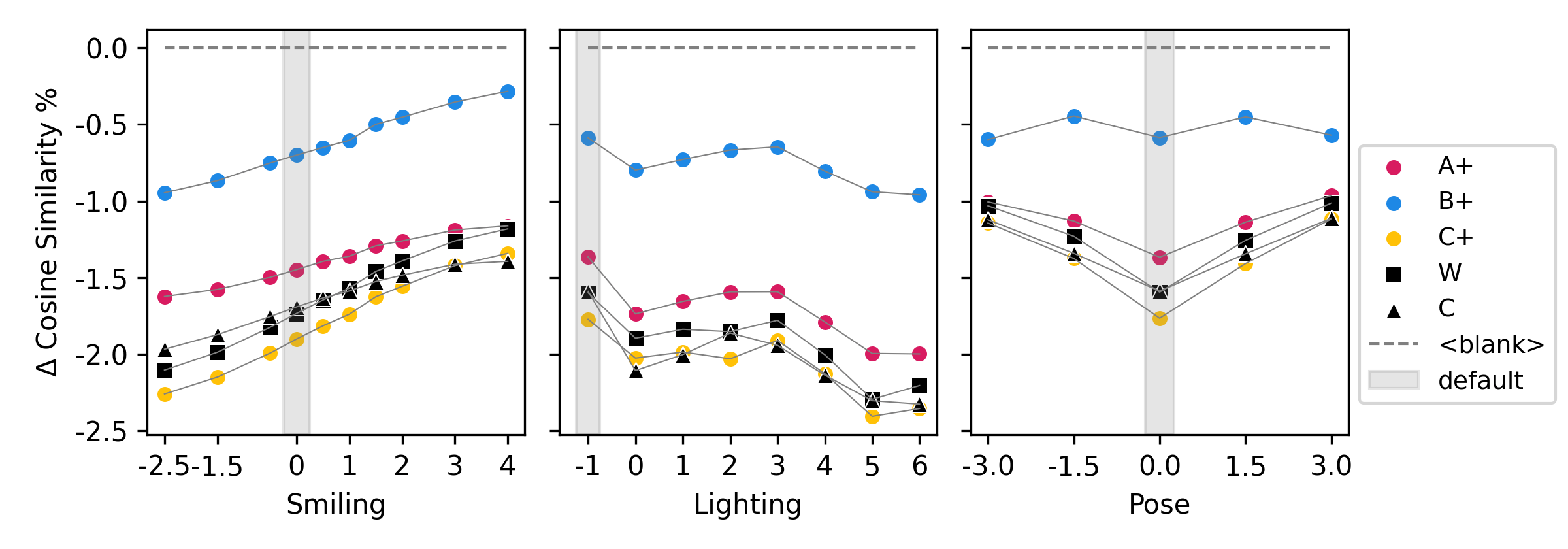

Positive Agency
Progressive Belief
Positive Communion
Warmth
Competence
Warmth


most frowning
most smiling
sample
identity
Black Women

most frowning
most smiling


Conservative Belief

Limitations
-
Attribute Manipulation Effectiveness
- Manipulations such as lighting or facial expressions might have differing levels of effectiveness across demographic groups. Human annotators validated this, but such validation is, of course, never perfect.
-
Potential Residual Confounds
- Some color confounds might still be present despite controls for background, clothing, and hair color.
-
Dataset vs. Model Bias
- We only investigate one CLIP model.
The impact of protected and non-protected characteristics is comparable in size.
Social Perception w.r.t. age shows clearly clustered groups in CausalFace.
Strongly diverging age effects for Black Women.
Strong impact of smiling of Black Women on positive social perception.
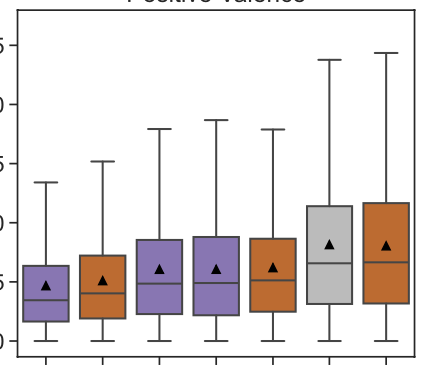



carinah@ethz.ch
slides.com/carinah

Appendix
Smiling
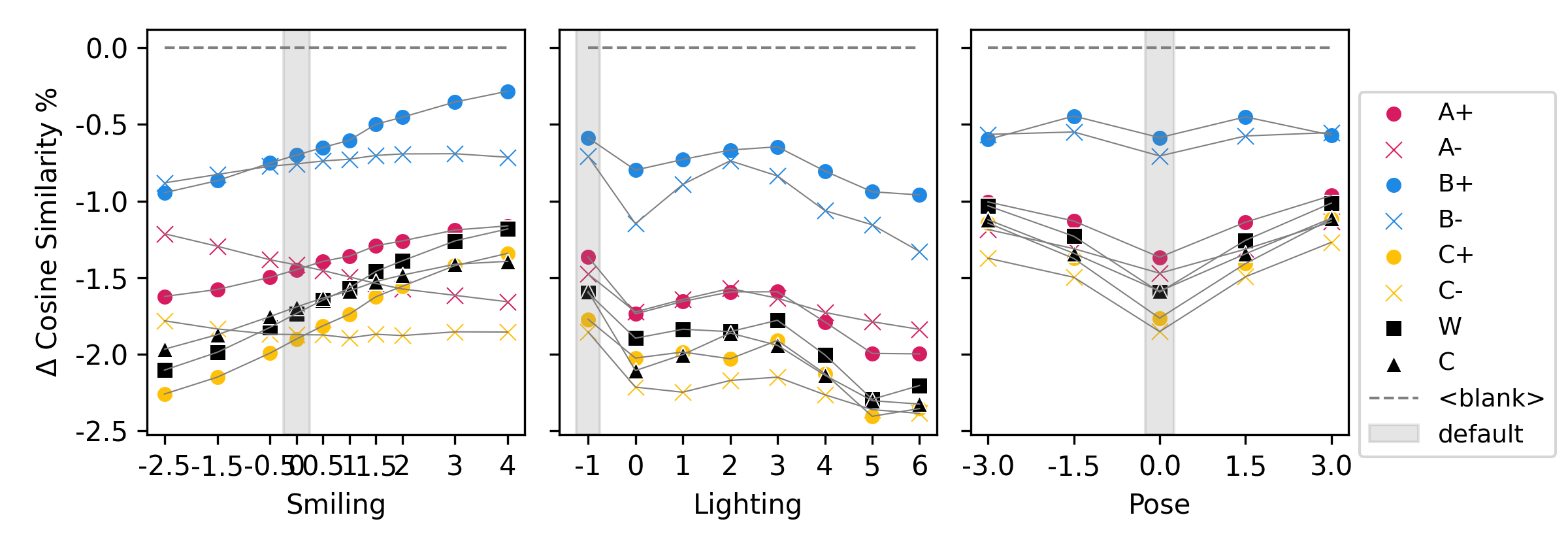


C
P
Smiling



C
Word Embedding Association Test (WEAT)
pooled sd
asian black

photo of a warm person




photo of a warm person



asian black
—
WEAT


Kruskal-Wallis \(\chi^2\) = 1.6,
p-value = 0.4


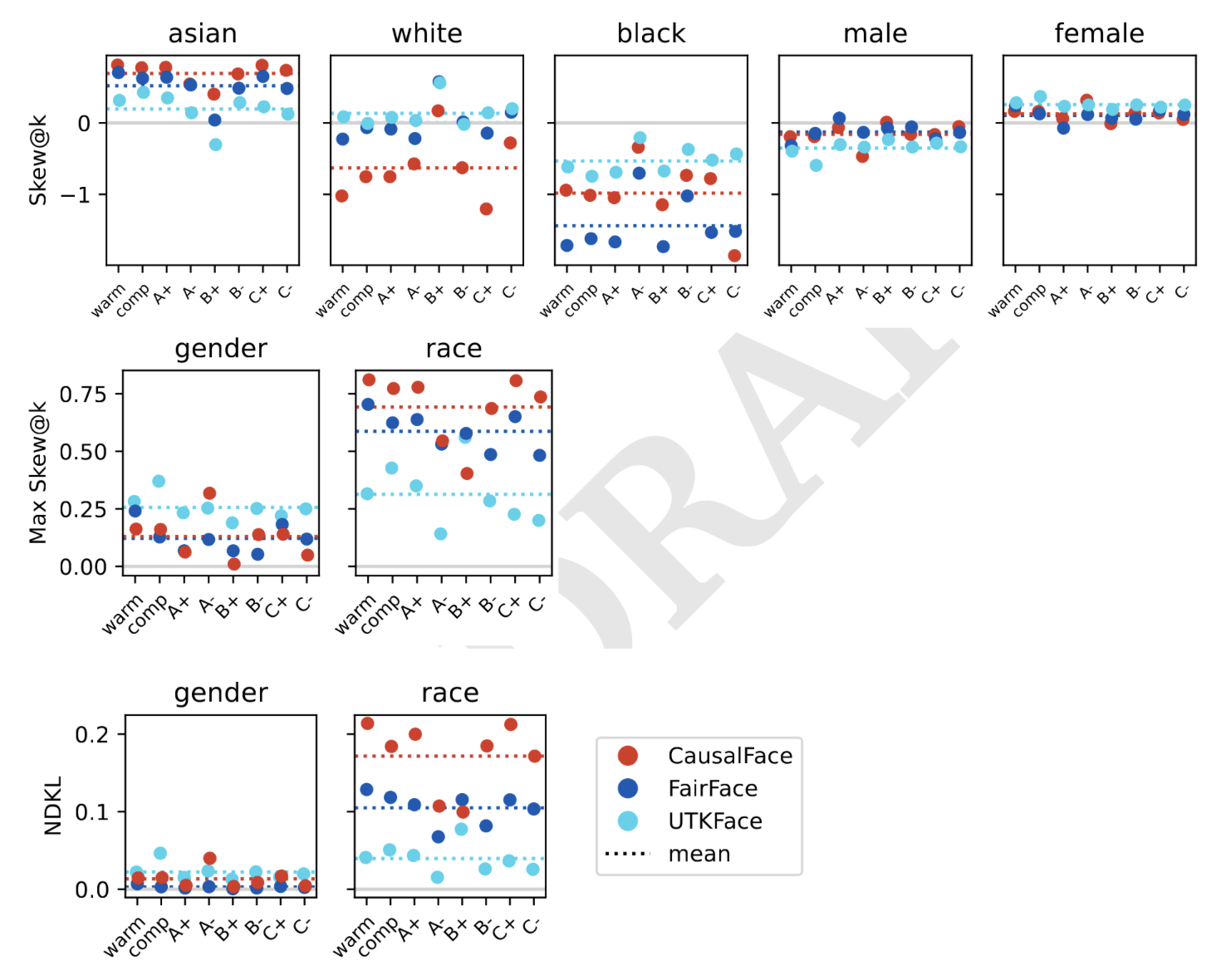






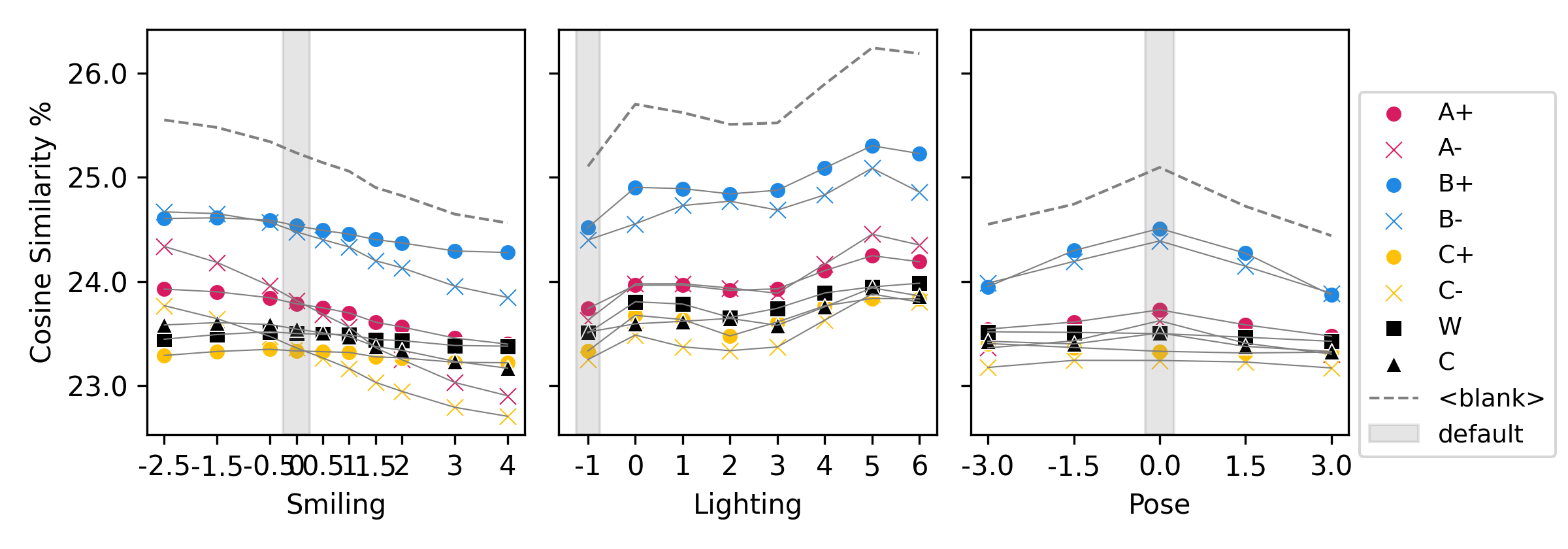



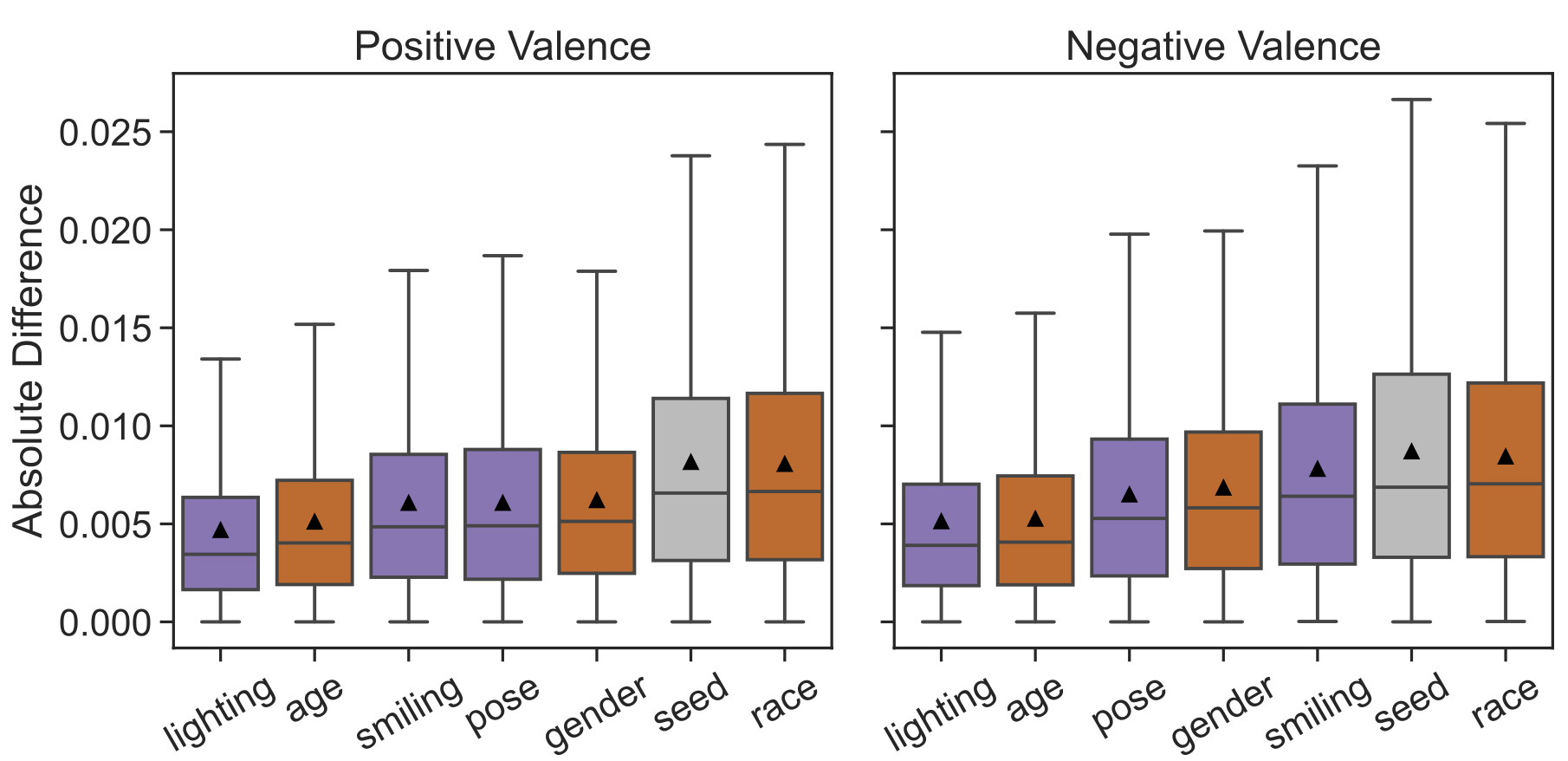
protected and non-protected attributes
–
+
Theoretical Models
Statistical discrimination (Arrow, 1998)
Unfair treatment of ethnic minorities can result from rational actions executed by profit-maximizing actors who are confronted with the uncertainties accompanying selection decisions.
Taste-based discrimination (Becker, 2010)
Discriminatory behavior is the result of people’s unfavorable attitudes toward ethnic minorities.
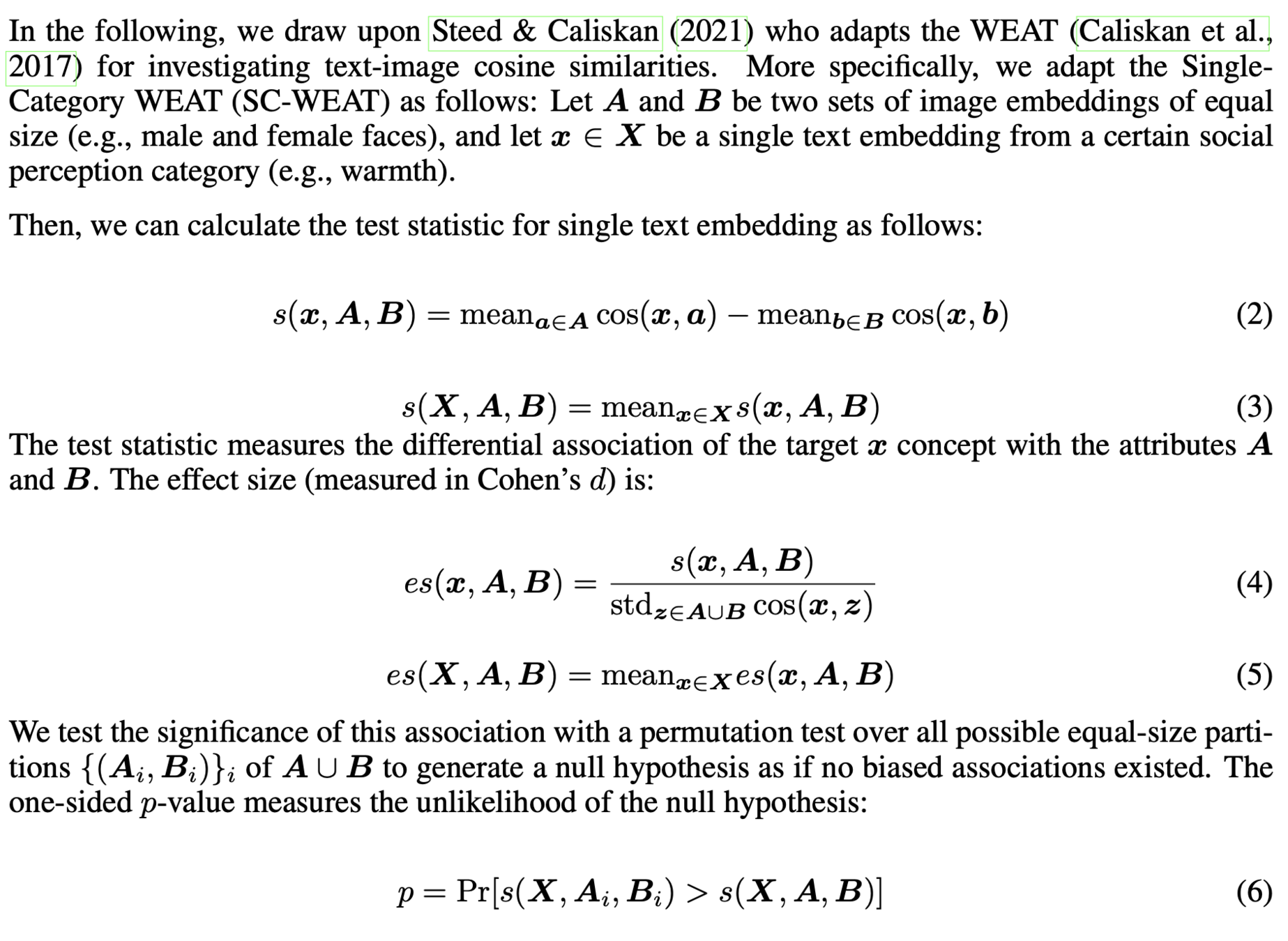
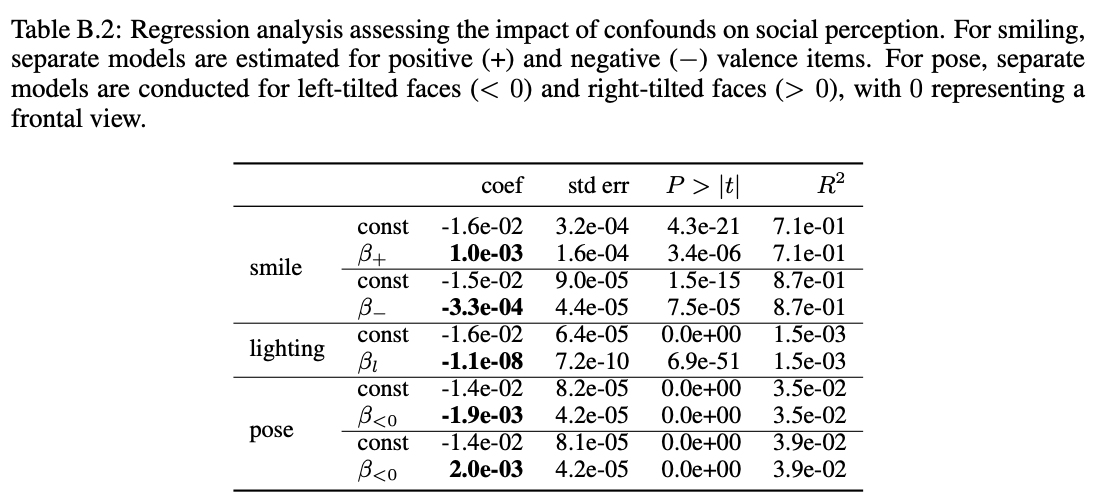

Prompt templates
A photo of a <attribute> person.
A <attribute> person.
This is a <attribute> person.
Cropped face photo of a <attribute> person.
Bootstrapping Variations
- We randomly choose two distinct values, \(x_1,x_2 \sim X\), for the chosen dimension (e.g., white and black).
- For each pair of values, we select the respective image embeddings, \(i_1(x=x_1), i_2(x=x_2)\) that are equal in all other dimensions (in this example: gender, age, smiling, lighting, and pose).
- We then compute the difference in cosine similarities between each image embedding and a text embedding \(t\), defined as \(\Delta(t, i_1, i_2) = \lvert \cos(i_1, t) - \cos(i_2, t) \rvert\).
- This process is repeated 1,000 times, generating a bootstrap distribution of \( \Delta \) values.
- This distribution describes the impact of the specific dimension on the cosine similarity of image embeddings and text embedding.
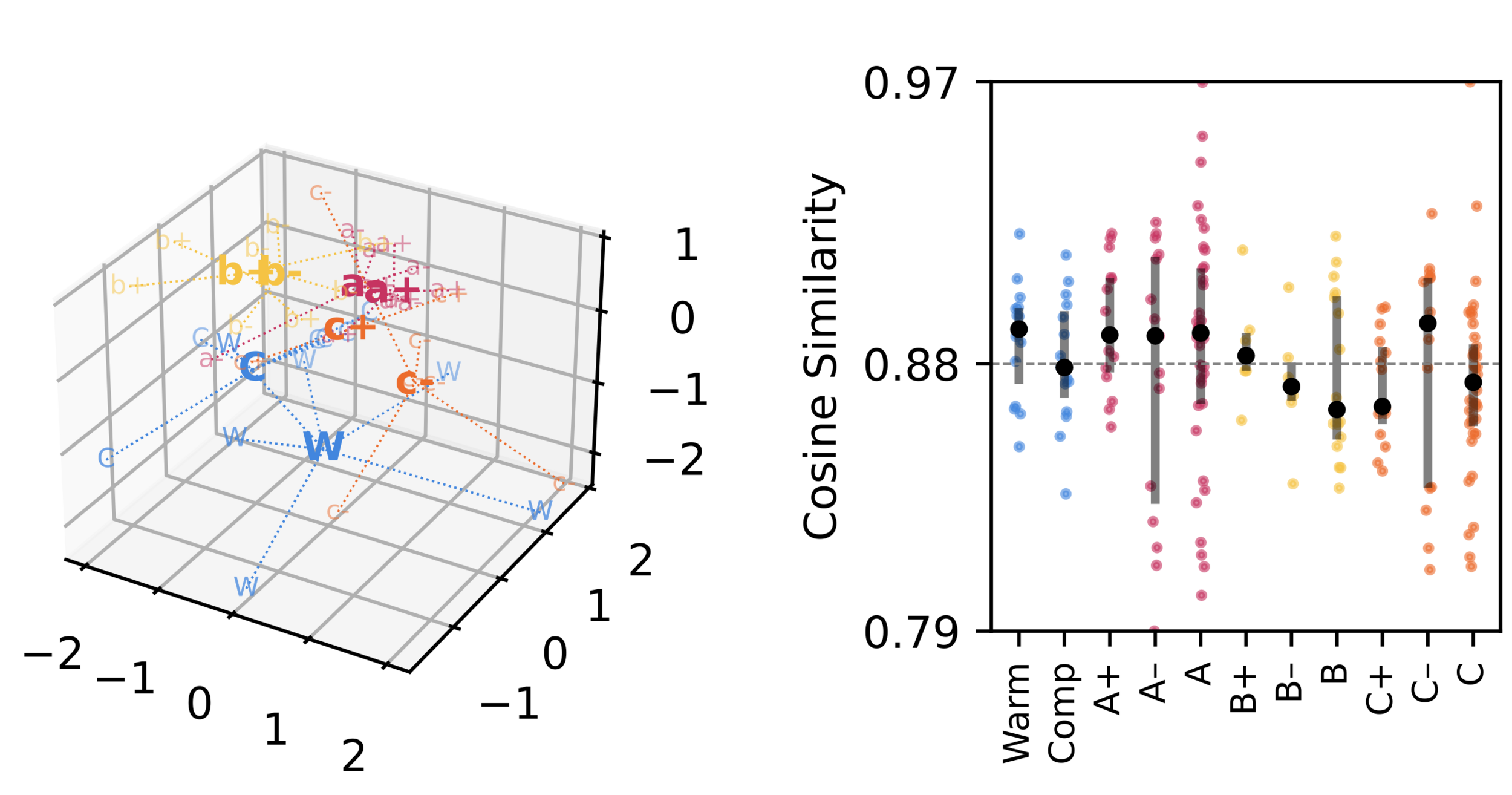
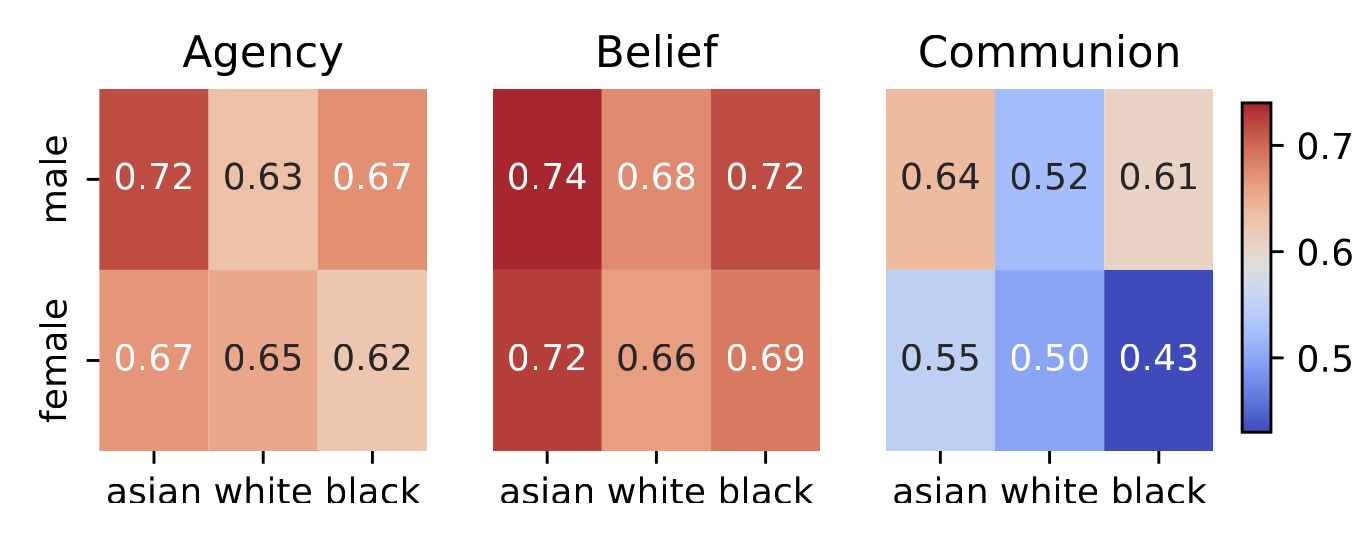
Heatmap of Pearson correlation coefficients of positive and negative valence dimensions of the ABC model.
How does Facial Expression impact Social Perception?


Smiling

Smiling
a photo of a person


Smiling
a photo of a person

a photo of a person

Smiling
a photo of a person

a photo of a person
Smiling


a photo of a person
Smiling

a photo of a liberal person

Belief (progressive)
Smiling

Belief (progressive)

Agency +
Communion +
Warmth
Competence




$$\Delta$$ Cosine Similarity %
Progressive Belief
Gender
Females
Males
Race
Asian
Black
White
Black Women
🔬 Science-Oriented
🔄 Alternative
🕊️ Liberal
📱Modern

How does CausalFace compare to wild-collected datasets w.r.t. gender and race?


FairFace
UTKFace
CausalFace
Commonly used bias-metrics
- Markedness (Wolfe and Caliskan, 2022)
- adapted WEAT (Caliskan et al., 2017)
- Skew@k, NDKL (Geyik et al., 2019)
Markedness
a photo of a person
a photo of a WHITE person
unmarked
marked
| image category |
CausalFace |
|---|---|
| white |
45.50 |
| black | 0.68 |
| asian | 0.05 |
| male | 0.42 |
| female | 0.64 |
| Fair Face |
UTK Face |
|---|---|
| 47.09 |
32.6 |
| 1.88 | 2.9 |
| 1.85 | 4.1 |
| 0.00 | 20.1 |
| 0.00 | 11.6 |
>
%
- Markedness (Wolfe and Caliskan, 2022)
- adapted WEAT (Caliskan et al., 2017)
- Skew@k, NDKL (Geyik et al., 2019)
✓
✓
✓
